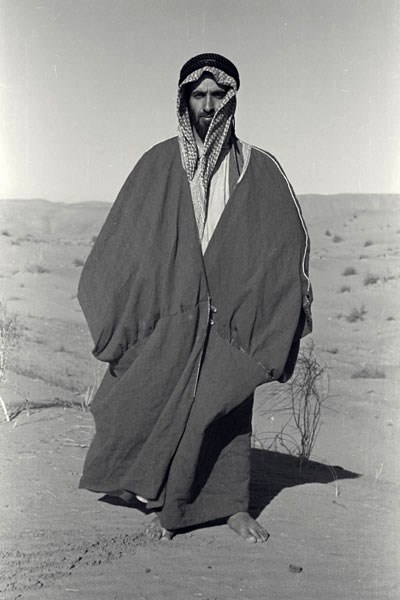 |
| Zayed bin Sultan Al Nahyan, during Bedouin life c (http://en.wikipedia.org/wiki/File:Shiekh_Zayed.jpg) |
Sheikh Zayed bin Sultan Al Nahyan, (1918 – 2 November 2004), the principal architect of United Arab Emirates (UAE), was the ruler of Abu Dhabi and president of the UAE for over 30 years (1971–2004). Zayed was the youngest son of Sheikh Sultan bin Zayed bin Khalifa Al Nahyan, the traditional ruler of Abu Dhabi from 1922 to 1926. He was named after his famous grandfather, Sheikh Zayed bin Khalifa Al Nahyan, who ruled the emirate from 1855 to 1909. On August 6, 1966 he succeeded his brother, Sheikh Shakhbut Bin-Sultan Al Nahyan
At the time of Zayed's birth, the Emirate of Abu Dhabi, like the surrounding states, was located along what was then known as the Trucial Coast. It was in treaty relations with Britain, signing a series of agreements on maritime truce with the local rulers. As he was growing up, there were no modern schools anywhere along the coast. He received only a basic instruction in the principles of Islam, and went out into the desert with the Bedouin tribesmen, familiarizing himself with the life of the people, their traditional skills and their ability to survive under the harsh climatic conditions.
His religious tolerance of Christians and the freedom given Western workers sojourning in the UAE was in marked contrast to most neighbors in the region and exposed him to criticism from other more conservative nations. Sheikh Zayed was respected around the world for his unifying influence and his drive to make the Emirates one nation. His calls for cooperation extended across Persian Gulf to Iran. Sheikh Zayed advocated dialogue as the means to settle the row with Tehran over three strategic Persian Gulf islands which Iran seized from the (future) UAE Emirate of Sharjah in 1971, though the islands remain in Iranian hands, despite over three decades of UAE diplomatic initiatives.
At the time the British withdrew from the Persian Gulf, Zayed oversaw the establishment of the Abu Dhabi Fund for Arab Economic Development; through its oil riches were channeled to some forty less fortunate Islamic nations in Asia and Africa during the decades that followed. He is also remembered as "the man who turned the desert green," because he invested oil revenues into projects to improve the harsh desert environment. Using the country's enormous oil revenues, Zayed built up institutions such as hospitals, schools and universities and made it possible for UAE citizens to enjoy free access to them. He also decreed that the State would undertake the cost of foreign health care for those families unable to afford it. Other charitable acts included adopting hundreds of orphans and building several hospitals abroad in Europe, Asia, and Africa.
in 1999, while he was in a hospital for some tests, the people of the UAE wrote him a personal thank-you letter with 1.5 million signatures. He underwent a kidney transplant in 2000 at the Cleveland Clinic in the U.S. On 2 November 2004, Zayed died, as announced by Abu Dhabi TV. He was believed to be 86 years old. No official cause of death was given; however he had recently been in London undergoing hospital treatment. He is buried in the courtyard of the new Sheikh Zayed Grand Mosque in Abu Dhabi. His eldest son, Sheikh Khalifa bin Zayed Al Nahyan, born in 1948, took an increasing role in the government from the 1990s; he was ratified as president of the United Arab Emirates by his fellow rulers on the Supreme Council directly after his father's death. Shaikh Zayed International Airport located at Rahim Yar Khan, Punjab, Pakistan is named in his honor.
Page created on 4/2/2011 12:00:00 AM
Last edited 4/2/2011 12:00:00 AM
